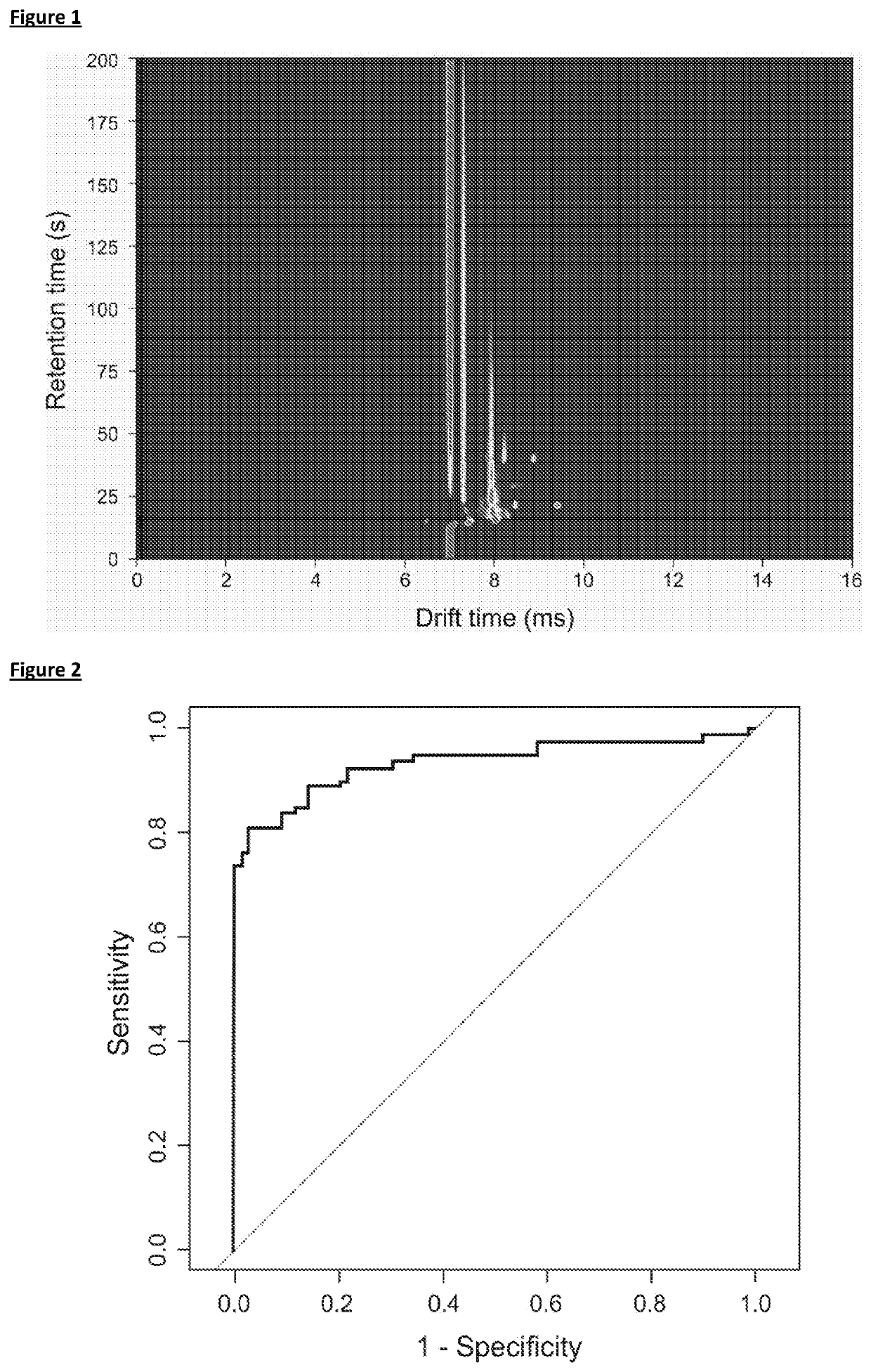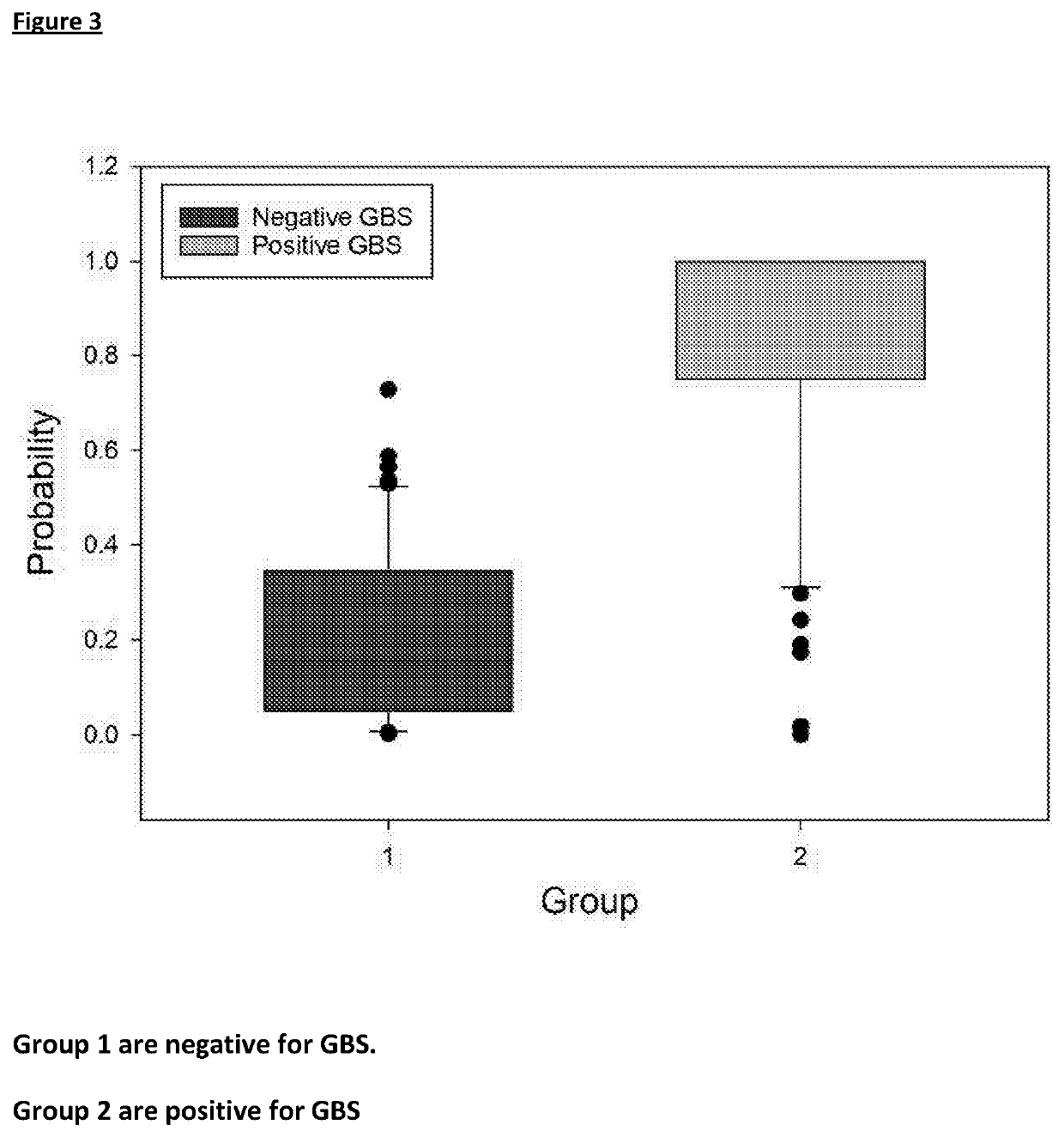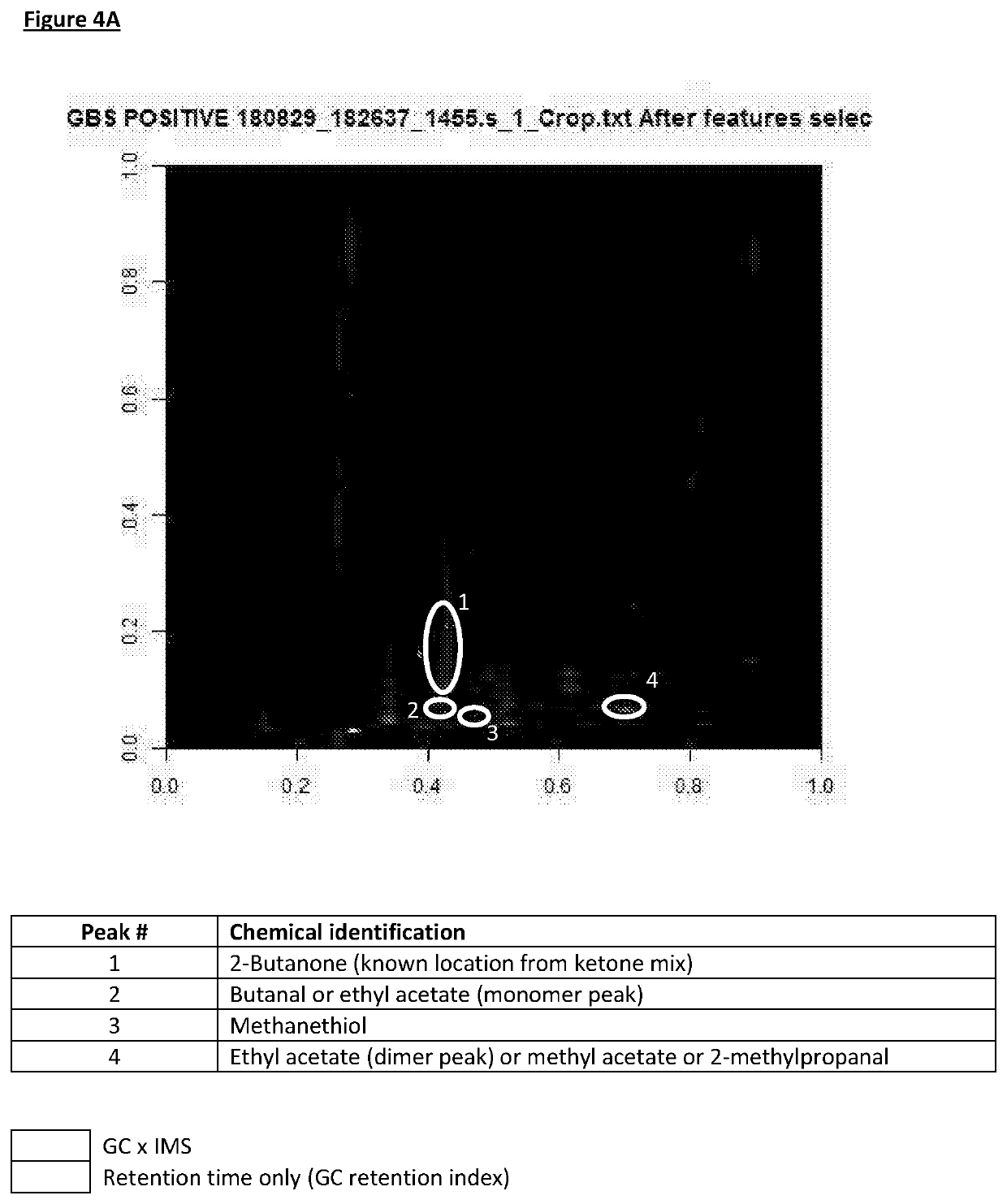Group b streptococcus infection
- Summary
- Abstract
- Description
- Claims
- Application Information
AI Technical Summary
Benefits of technology
Problems solved by technology
Method used
Image
Examples
example 1
wab
[0063]243 women were swabbed throughout pregnancy corresponding to 607 sets of swabs. The demographics of these women is illustrated in Table 1. The maternal GBS colonisation rates, as defined by a positive enriched culture from vaginal swabs, was 13.6% (corresponding to 33 women).
TABLE 1Characteristics of the women taking part in the study,the booking BMI of six patients is not known.Number of women with demographic data243Age at booking (years) Mean (SD)31.3(4.9)Booking BMI (kg / m2) Mean (SD)26.3(5.7)Parityn (%)080(32.9)189(36.6)249(20.2)312(4.9)45(2.1)≥55(2.1)Unknown3(1.2)Ethnic groupn (%)White192(79.0)Mixed1(0.4)Asian23(9.5)Black22(9.1)Other5(2.1)
example 2
Identification
[0064]VOC analysis indicates that the presence of butyraldehyde (butanal), ethyl acetate, methyl acetate and 2-methylpropanal can be used to distinguish between samples from subjects that are GBS positive and GBS negative (see FIG. 4A and 4B).
example 3
al Analysis
[0065]FIG. 1 shows a typical output of the GC-IMS to a positive swab. The output is a 3D topographic map with each point characterised by the retention time in the chromatographic column (in seconds), the drift time in the drift tube (in milliseconds) and the intensity of the ion current signal (in millivolts). The signal intensity is indicated by colour. Each high-intensity area represents a single or combination of chemicals (with the same properties). The long line red line is the RIP (reactive ion peak), which is a background signal. The background is represented in blue with the non-blue areas showing that the instrument is detecting chemicals. The intensity of the peak (with red being the highest intensity) represents the amount of ions (and thus the chemical) detected. In general, each of the circular areas of higher intensity represent a different chemical. Furthermore, it can be see that the majority of the response is in the central section of the output.
[0066]T...
PUM
 Login to View More
Login to View More Abstract
Description
Claims
Application Information
 Login to View More
Login to View More - R&D
- Intellectual Property
- Life Sciences
- Materials
- Tech Scout
- Unparalleled Data Quality
- Higher Quality Content
- 60% Fewer Hallucinations
Browse by: Latest US Patents, China's latest patents, Technical Efficacy Thesaurus, Application Domain, Technology Topic, Popular Technical Reports.
© 2025 PatSnap. All rights reserved.Legal|Privacy policy|Modern Slavery Act Transparency Statement|Sitemap|About US| Contact US: help@patsnap.com



